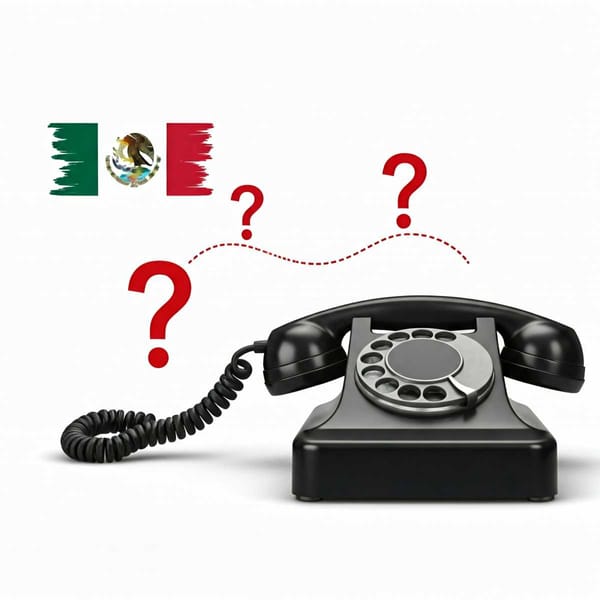Five things you didnt know about tortillas
Consumers are looking for healthy, traditional foods such as artisanal tortillas as a way to include nutrients that improve their health status.

Tortillas made by hand from native varieties of blue corn have significantly higher nutritional and bioactive compound content than those produced commercially from industrialized flours, a study by the Food and Development Research Center, and the National Autonomous University of Mexico found.
This study was designed to evaluate and compare the nutritional properties, and composition of bioactive compounds, of artisanal tortillas and tortillas, produced commercially from industrialized flours, purchased in a supermarket, as they are available to the final consumer.
The results showed that artisanal blue corn tortillas have more dietary fiber and calcium, higher content of free phenolic compounds, as well as twice the antioxidant capacity, compared to supermarket-acquired tortillas.
Using the highly efficient liquid chromatography (HPLC) method, blue corn tortillas were found to have four times more ferulic acid than supermarket tortillas; this is relevant because this phenolic acid has been linked to several biological activities, including antioxidant, anti-inflammatory, and anti-carcinogenic activity.
It is advisable to prefer the consumption of traditional Mexican foods, in this case, the handmade native corn tortillas, to take advantage of their best nutritional and nutraceutical properties for the benefit of health. If the blue corn tortilla is included in a balanced diet, in addition to providing basic nutrients, it can help prevent diseases associated with oxidative stress, due to its excellent content of antioxidants, anthocyanins, and phenolic acids.
The consumption of artisanal native corn tortillas, besides being beneficial to our health, could promote the conservation of this genetic resource, as well as support the economic development of the farming communities that produce this crop through traditional agroecological practices.
Five things you didn't know about tortillas
The preparation of tortillas makes both the daily and festive meal special, and with the popularity of this dish in the world, people all over the world have adopted the exotic taste of Tex Mex cuisine.
Easy to prepare Text Mex dish
Ancient South Americans left two essential foods for future generations: corn and chili. Although South America is the origin of many products, it is these two that have become true heroes of Mexican and Tex Mex cuisine. For centuries, corn has been used to make the dough from which tortillas are made. It is one of the most important uses of corn.
Over the years, the world has learned how to make tortillas from wheat and, from a health perspective, whole wheat flour. Whole wheat flour is considered to be healthier because it is less processed than common wheat flour. They contain more nutrients and fiber and are processed more slowly by the body into energy, so the feeling of satiety lasts longer. Whole grain products can reduce the risk of developing diseases such as type 2 diabetes and cardiovascular disease.
Whole wheat tortillas taste like whole-wheat bread. Corn flour alone is not suitable for making cake dough, because when it is mixed with liquid, the dough has no shape. But South American residents in central Mexico managed to solve the problem. They invented the traditional method of nocturnalization, which is used to turn corn into cakes. Not only does nectar distillation open up the possibility of using maize grains, but it also improves its nutritional value and taste.
Soaking corn in alkaline water increases the protein, calcium, and niacin content. Niacin is essential because it improves the absorption of vitamins. The process of nymphalization is still used today, just as it was used thousands of years ago. Nowadays, the resulting dough is used in two ways. The first is to make a mass of dough as a base for corn cakes and chips. The other way is to knead the dough into the flour. This makes it easier to carry, store, and use for making pies, tacos, and chips.
How to warm tortillas?
They vary in size and taste, but all play an important role in Tex Mex dishes such as cold wraps, a taco buffet, enchiladas, quesadillas, and hot burritos. Their size depends on their intended use, and the most widely used are 8-inch (20.3 cm) and 10-inch (25.4 cm) tortillas because they can be used for a wide variety of dishes. You can eat them both hot and cold, but the hot tortilla is softer and has a better taste.
If the tortillas are heated in the oven, it will take 15-20 minutes at 80-100 ° C. In the microwave oven, 30 seconds will suffice. Tortillas can be placed on a dry pan and heated on both sides. If you are outdoors you can use the grill for heating. When preparing dishes such as enchiladas, they can also be stuffed and baked in the oven, just like pasta.
In the spice mixture, the filling is distinguished by Roman cumin, chili, and oregano
A blend of Roman cumin, chili, oregano, and other ingredients is used to create a unique, true Mexican flavor. It is suitable for making minced meat and vegetarian taco fillings (with soy). This spice blend can be used in many different ways, not just in the taco buffet. Interestingly, this mix of spices also tastes good in other minced meat dishes, such as minced meat sauce, cutlets, and fried meat. It can also be added to Mexican chili con carne to deepen its flavor, or added to meat pies, fresh fish before baking.
It should be noted that soy fillings are popular with both vegetarians and vegans, as only water and tomatoes are needed without the mixture. Cumin or Roman cumin is more common in Tex Mex than Mexican cuisine. Chili and cumin are the typical flavors of Tex Mex cuisine. This combination is found in ancient chili powder blends. Taco doesn't have one specific recipe. Soft tortillas or hard boats can be used in this dish, and the choice of filling is almost endless.
Corn cobs were already known by the Aztec Empire
Until the Spanish conqueror Ernann Cortes (1485-1547) set out on an expedition to the New World and conquered the Aztec empire in what is now Mexico, corncakes were the daily food of the Aztecs. He mentioned this fact in a letter sent to the King of Spain in 1520. In the local Nahuatl language, the dough cakes were called "tlaxcalli". The Spanish renamed it a tortilla, derived from the word "torta," and in Spanish means "round cake."
The term Tex Mex originates from the abbreviation of the Texas-Mexico Railroad, founded in 1875. When the Mexican border was once moved to the south where the Rio Grande flows, thousands of Mexican citizens became US citizens. For thousands of Mexicans living in the United States, they cooked their food using their usual methods and ingredients. This is how the foundations of modern Tex Mex cuisine began.
Comal - tortilla cast iron skillet
Nowadays, millions of tortillas are made in modern factories, but for authentic baking, a comal - a wide cast-iron skillet without a rim - is used. Comal can come in a variety of sizes, from a size suitable for baking a single tortilla at home to a size that can be placed over a fire pit and used to bake several tortillas at once. The oldest comals were made of ceramic, not metal. Their press is used to smooth the tortillas evenly. Factory-made tortillas are made according to the same principle, only the presses used are large enough to flatten several tortillas at a time.
Nutritional value of tortillas
The first research on tortillas in Mexico was carried out in the 1950s by the National Institute of Nutrition. Later, the fortification of the tortilla with soybean flour, chickpea, etc. was studied. Other researchers have tried to enrich the tortilla, either using fish protein, soybean flour, etc. In some cases there have been significant advances, in others, the flavor, color, or product hardens quickly. On the other hand in the Cinvestav have been carried out studies of chemical changes in the content of vitamins and other nutrients in corn that are lost in the transformation of corn into a tortilla.
It is paradoxical that while tortilla consumption in Mexico is at risk (with all the cultural, social, and nutritional aspects that this implies), in the United States its market has grown by 25% in the last three years. This growth reported sales of four and a half-billion dollars to companies that commercialize corn flour, which is displacing the consumption of bread and buns.
It has been speculated that this may be due, firstly, to the increase in the Hispanic population in the neighboring country, and secondly, to the adoption of the Atkins diet (low carbohydrate) among the non-Hispanic population, which has replaced the consumption of bread with that of tortillas. Be that as it may, Mexicans should not stop enjoying tortillas, which have fed and nourished them for millennia, and which are ever so much a part of Mexican cuisine, so nutritious and tasty.
Chicken quesadillas with pineapple salsa recipe
Quesadillas is a popular Mexican meal. They consist of a tortilla with delicious fillings and a cheese baked in a baking pan until the cheese is melted. In this recipe, the tarts are filled with chicken, pineapple salsa, onions, cheese, and coriander. Served with fresh salad, baked green beans, and garlic sauce.
Ingredients
Number of servings: 4
4 tbsp. onion and garlic dip
1 cup Pineapple Salsa
4 pack tortillas
Fajita Spice Mix
2 pieces of chicken fillet
400 g grated cheese
3 pieces onions
0.5 pcs fresh coriander
2 tbsp frying oil or butter
150 g of fresh green beans
150 g mixed salad
0.5 pcs lime
Preparation
Put the chicken fillets in the baking pan and add the fajita spice mixture. Bake the chicken on medium heat for about 3 minutes on each side until fully cooked and tenderly brown. Cut the fillets into thin slices and place on a tortilla with shredded cheese, pineapple salsa, chopped onions, and chopped coriander (filling is enough for 8 tortillas).
Fold the tortilla in a crescent shape and cook over medium heat on both sides until the cheese is melted and the tortilla is golden brown. Mix the oil and green beans in a bowl. Bake the beans and salt. Put the salad in a bowl and mix with the onion and garlic dip sauce. Squeeze a little lime juice on top and top with green beans. Cut each quesadilla in half and place it on a plate. Serve with salad.




